CRPs, the Ambassadors of Mental Wellness: Sharing of their Experiences on Psycho-Social Support
Being part of Odisha Chapter of “Rapid Community Response to Covid-19 (RCRC) Coalition, CYSD in association with Gram Vikas, Harsha Trust and Shristi is currently implementing a common project in some select Blocks of Odisha. A study on “Monitoring Rural Lives during the Pandemic” was conducted by RCRC in July 2020. One of the key findings of the study revealed that there is a significant impact of Covid-19 pandemic on the mental state of affairs of the rural community mentioning 72 percent of the households surveyed have fear and anxiety, followed by 39 percent have come across irritation /anger and 15 percent sleeplessness. In this context, providing psycho-social support to the people in need, as one of the critical interventions, has been planned under this project.
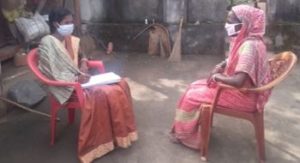 To take the process forward, a three-day virtual orientation programme (1st Sept. to 3rd Sept.) on psycho-social support (of 8 hours’ duration in total) was organized for 32 Community Resource Persons (CRPs) and the Programme Coordinators of RCRC Odisha partners, facilitated by Ms. Sushree Mishra, a Senior Counselor on psycho-social. After training, the CRPs involved in this project, as ambassadors of mental wellness, have visited different families and initiated conversation on mental health, impact of Covid-19 pandemic and people’s experience during this phase.
To take the process forward, a three-day virtual orientation programme (1st Sept. to 3rd Sept.) on psycho-social support (of 8 hours’ duration in total) was organized for 32 Community Resource Persons (CRPs) and the Programme Coordinators of RCRC Odisha partners, facilitated by Ms. Sushree Mishra, a Senior Counselor on psycho-social. After training, the CRPs involved in this project, as ambassadors of mental wellness, have visited different families and initiated conversation on mental health, impact of Covid-19 pandemic and people’s experience during this phase.
The CRPs shared their experiences from the ground during the follow-up training programmes organized on 15th and 26th Sept. 2020. While there were dozens of cases the CRPs wanted to share and get further support, only three cases were discussed and supervised for the clarity and benefit of all the participants. The CRPs like Jemamani Mahanta, Hemalata Mahanta and Khirodini Mahanta volunteered to share their learning and experience.
Jemamani shared how there was little scary to start the dialogue on mental health. To her surprise, she told within 30 minutes, one after another all the family members joined her and shared their struggle. They were pleasantly surprised as someone paid a visit and asked about their well-being, as other villagers had ostracized them due to the corona positive case in their family. Sharing her experience, Jemamani told that she had tried to reach out to a family when she came to know they are in a difficult situation. Within no time the family members could openly express about the existing mental illness in the family and how they feel so clueless about it. “It’s an everyday stress, an everyday problem,” family members shared. While one of them was in tears, another was looking at the open sky with some hope.
Hemalata, while visiting a family, offered empathy and talked to them about the Citizen Support Center Helpline (8880592592) set up by CYSD. She discussed with the family members about the psychosocial support provided by the professionals through this programme. The family requested her to come back again and help them make a call to Helpline. They were more than thankful for the presence of Hemalata.
Khirodini, who herself has recovered from Corona, is no less than a warrior. She actually didn’t listen to others instruction for not visiting other villages. She was convinced to provide her valuable services to a family, which was recently under home quarantine.
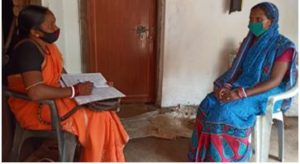 While talking about Covid-19 impacts, many stories, many struggles, Khirodini just shared a girl’s case who was reported attempting suicide simply due to the sheer difficulty in everyday life. She patiently listened and showed them a video (End your Problem, not Life) on the same issue. The same girl thanked Khirodini and promised her not to harm her life again.
While talking about Covid-19 impacts, many stories, many struggles, Khirodini just shared a girl’s case who was reported attempting suicide simply due to the sheer difficulty in everyday life. She patiently listened and showed them a video (End your Problem, not Life) on the same issue. The same girl thanked Khirodini and promised her not to harm her life again.
Being an eyewitness, Khirodini has been trying to make herself believe that she was one of the sufferers. Despite all these, she provided required support to the affected families for which she is trained. Many more such lived cases connected to psycho-social support will come through our CRPs, the ambassadors of mental wellness, in near future phase-wise.

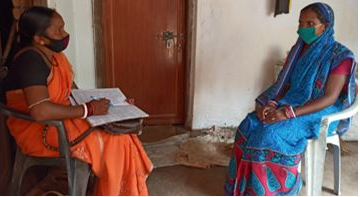
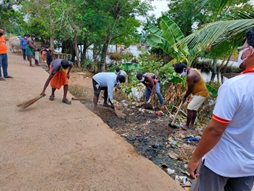 Sanitation and Disinfection drive was undertaken in 32 villages engaging around 64 lead volunteers in 19 Panchayats of Bari Block. The sanitation drive was carried out by deploying 900 local youth volunteers. The drive included steps like cleaning of internal village connecting roads and lanes, and disinfection using bleaching powder with the support of local youth and SHG members. A total of 4 fully-damaged thatched houses were repaired by the volunteers. A total of 15 ponds, 26 dug tube wells, and 15 water sources were fully disinfected administering bleaching powder. Also, Halogen tablets were distributed to 450 needy families.
Sanitation and Disinfection drive was undertaken in 32 villages engaging around 64 lead volunteers in 19 Panchayats of Bari Block. The sanitation drive was carried out by deploying 900 local youth volunteers. The drive included steps like cleaning of internal village connecting roads and lanes, and disinfection using bleaching powder with the support of local youth and SHG members. A total of 4 fully-damaged thatched houses were repaired by the volunteers. A total of 15 ponds, 26 dug tube wells, and 15 water sources were fully disinfected administering bleaching powder. Also, Halogen tablets were distributed to 450 needy families.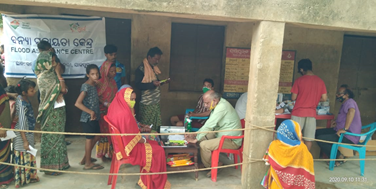 Following the sanitation and disinfection drive, CYSD organized 12 health check-up camps in Bari Block with the active collaboration with Humanitarian Aid International and Amrut Global network in which around 6050 people could check up their health and got treatment. Cotton masks and sanitary napkins were distributed to all needy patients, adolescent girls, and women of reproductive age groups.
Following the sanitation and disinfection drive, CYSD organized 12 health check-up camps in Bari Block with the active collaboration with Humanitarian Aid International and Amrut Global network in which around 6050 people could check up their health and got treatment. Cotton masks and sanitary napkins were distributed to all needy patients, adolescent girls, and women of reproductive age groups.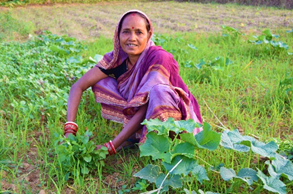 There was a need to restore the livelihoods of people for ensuring the immediate economic revival of the households. Most of these vulnerable households depend on farming and vegetable cultivation which was lost due to the floods. The loss of livelihood and the resultant wage-loss resulted in food and nutrition insecurity for the poor vulnerable families. They were filled with anxiety and fear about the uncertainty which was looming large.
There was a need to restore the livelihoods of people for ensuring the immediate economic revival of the households. Most of these vulnerable households depend on farming and vegetable cultivation which was lost due to the floods. The loss of livelihood and the resultant wage-loss resulted in food and nutrition insecurity for the poor vulnerable families. They were filled with anxiety and fear about the uncertainty which was looming large.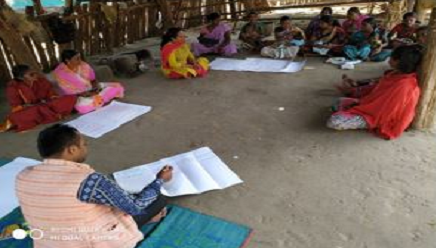
 As part of the community monitoring of basic health services, facilitated by CYSD, both the service providers i.e. ASHA, AWW and service users, like pregnant women and lactating mothers were interacted separately. While digging out the issue in detail, it was found that due to defunct bore-well in the AC campus, the Anganwadi Worker used to go far away to collect water for drinking and cooking purposed. On the other hand, the AC was having 38 pre-school children and it became a tough task for her to collect sufficient water for children’s daily use. Even the beneficiaries i.e. mothers of pre-school children complained that many a times their children were not getting drinking water at the Anganwadi Centre. Secondly, the surrounding of the AWC was very unhygienic in nature which led to insect breeding. Most of the time, the children made complaints about insects bit too. These two reasons altogether resulted absenteeism of children at the AWC.
As part of the community monitoring of basic health services, facilitated by CYSD, both the service providers i.e. ASHA, AWW and service users, like pregnant women and lactating mothers were interacted separately. While digging out the issue in detail, it was found that due to defunct bore-well in the AC campus, the Anganwadi Worker used to go far away to collect water for drinking and cooking purposed. On the other hand, the AC was having 38 pre-school children and it became a tough task for her to collect sufficient water for children’s daily use. Even the beneficiaries i.e. mothers of pre-school children complained that many a times their children were not getting drinking water at the Anganwadi Centre. Secondly, the surrounding of the AWC was very unhygienic in nature which led to insect breeding. Most of the time, the children made complaints about insects bit too. These two reasons altogether resulted absenteeism of children at the AWC.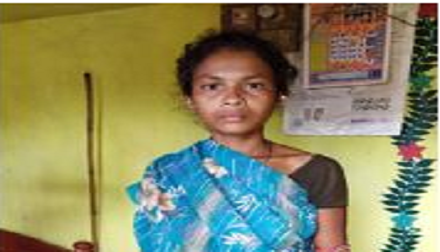
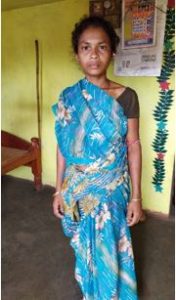 During the lockdown owing to outbreak of Covid-19, she has faced huge challenge to meet the day to day needs of her family. At the initial days of the lockdown, she managed the family with the PDS dry food materials received from government, but later on it was difficult on her part to manage with the limited food stock and even could not get any job to substantiate. With due support from the CYSD’S Child Development Project, she was facilitated to place job demand under MGNREGS and fortunately, she got labour work in nearby village road construction. Besides, she was also supported with agricultural inputs like paddy seeds, organic manure and vegetable seeds for cultivation during the ongoing Kharif Season by the project and got a good return. Moreover, she is linked with OLM and MGNREGS for developing Nutrition Garden under Mo Bagicha programme.
During the lockdown owing to outbreak of Covid-19, she has faced huge challenge to meet the day to day needs of her family. At the initial days of the lockdown, she managed the family with the PDS dry food materials received from government, but later on it was difficult on her part to manage with the limited food stock and even could not get any job to substantiate. With due support from the CYSD’S Child Development Project, she was facilitated to place job demand under MGNREGS and fortunately, she got labour work in nearby village road construction. Besides, she was also supported with agricultural inputs like paddy seeds, organic manure and vegetable seeds for cultivation during the ongoing Kharif Season by the project and got a good return. Moreover, she is linked with OLM and MGNREGS for developing Nutrition Garden under Mo Bagicha programme. 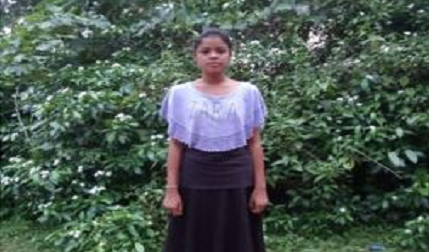
 After completion of her 8th Std. Kausalya had no other choice but to quit her study owing to the financial breakdown of her family. At the same time, two of her younger siblings were also attending the village school in Mendukuli.
After completion of her 8th Std. Kausalya had no other choice but to quit her study owing to the financial breakdown of her family. At the same time, two of her younger siblings were also attending the village school in Mendukuli.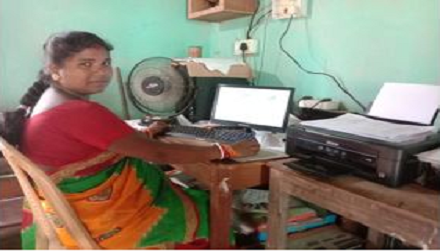
 In Talapada village, “Maa Sukheswari Self-Help Group” was formed by 12 young women for livelihood promotion with the facilitation of CYSD and Chandrama was one among them. Being active in the group, she was attending all meetings and various training programmes organized by CYSD. Out of her own interest, she used to maintain all SHG records in perfect manner. By observing her enthusiasm and area of interest in livelihoods promotion, CYSD Livelihood Team selected her to become the SHG Organizer to look after around 20 SHGs including her own SHG activities.
In Talapada village, “Maa Sukheswari Self-Help Group” was formed by 12 young women for livelihood promotion with the facilitation of CYSD and Chandrama was one among them. Being active in the group, she was attending all meetings and various training programmes organized by CYSD. Out of her own interest, she used to maintain all SHG records in perfect manner. By observing her enthusiasm and area of interest in livelihoods promotion, CYSD Livelihood Team selected her to become the SHG Organizer to look after around 20 SHGs including her own SHG activities.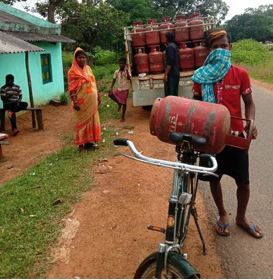 From the source of gas distribution, they earn a monthly income of 5500/. More importantly, now the community people are very happy by receiving LPG at their door steps, which provides them an option of clean, smokeless and healthy cooking. In due course, they are realizing that the practice of using cooking gas is not only contributing to save the trees and forest, but also acting as a strategy to mitigate climate change risks.
From the source of gas distribution, they earn a monthly income of 5500/. More importantly, now the community people are very happy by receiving LPG at their door steps, which provides them an option of clean, smokeless and healthy cooking. In due course, they are realizing that the practice of using cooking gas is not only contributing to save the trees and forest, but also acting as a strategy to mitigate climate change risks.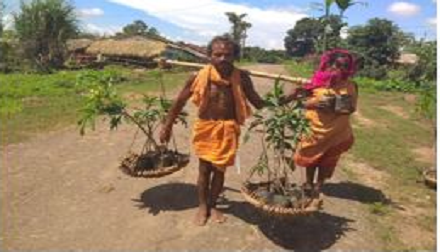
 The idea of promoting horticulture based durable livelihoods assets in the cultivable wasteland through MGNREGS and Special Central Assistance (SCA) to Tribal Sub Scheme (TSS) has been quite useful as the financial stress is not imposed on the farmer’s family. Rather the wasteland becomes productive and fertile through the constant application of bio-fertilizer and operation inter-culture. Most importantly, farming activities inside the fenced patches ensure immediate cash income for the families. The support of MGNREGS in terms of labor component is an additional earning medium and the farmers can also take up intercrop in the beginning years of intervention. `
The idea of promoting horticulture based durable livelihoods assets in the cultivable wasteland through MGNREGS and Special Central Assistance (SCA) to Tribal Sub Scheme (TSS) has been quite useful as the financial stress is not imposed on the farmer’s family. Rather the wasteland becomes productive and fertile through the constant application of bio-fertilizer and operation inter-culture. Most importantly, farming activities inside the fenced patches ensure immediate cash income for the families. The support of MGNREGS in terms of labor component is an additional earning medium and the farmers can also take up intercrop in the beginning years of intervention. ` This year, through the agriculture cluster approach, 20 acres of wasteland has converted into cultivable land and used for mango plantation in Brahmaguda village of Kenduguda GP in Boipariguda Block of Koraput district. In this program, around 20 tribal households were covered. A total of 51 job seekers were ensured employment wherein 22 women and 3 migrant laborers got eight weeks’ work engagement leading to leverage of wage to the tune of rupees 5.07 lakh, of which 1.49 lakh under SCA to TSS and 3.58 lakhs under MGNREGS. The major portion of the wages utilized by them was in the agriculture field for procurement of inputs, like paddy seed and fertilizers. The program certainly helped the farmers to come out of their distressed financial situations.
This year, through the agriculture cluster approach, 20 acres of wasteland has converted into cultivable land and used for mango plantation in Brahmaguda village of Kenduguda GP in Boipariguda Block of Koraput district. In this program, around 20 tribal households were covered. A total of 51 job seekers were ensured employment wherein 22 women and 3 migrant laborers got eight weeks’ work engagement leading to leverage of wage to the tune of rupees 5.07 lakh, of which 1.49 lakh under SCA to TSS and 3.58 lakhs under MGNREGS. The major portion of the wages utilized by them was in the agriculture field for procurement of inputs, like paddy seed and fertilizers. The program certainly helped the farmers to come out of their distressed financial situations.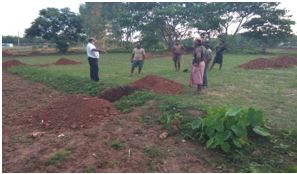
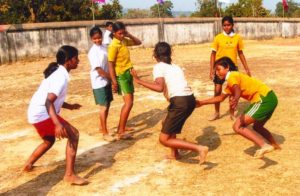 CYSD continuously working on issues related to Child Rights and Protection. In almost two decades of its intervention CYSD has been persistent in working towards increased protection from, and effective redressal of, all forms of about, neglect, exploitation and violence for children, especially girls. Moreover, it is working for building internal and external “Child Safe” environments. Our focus lies on improving knowledge, attitude and practice of the children, parents and community on child abuse, female foeticide, child marriage and gender based violence and voice for a stringent legislation and policy on child protection. The initiative also fosters community based child protection and its effective integration into the state / national level child protection system. Special attention is given to increase protection from abuse, neglect, exploitation and violence for girls from vulnerable and excluded communities. The objectives of programme intervention are to :
CYSD continuously working on issues related to Child Rights and Protection. In almost two decades of its intervention CYSD has been persistent in working towards increased protection from, and effective redressal of, all forms of about, neglect, exploitation and violence for children, especially girls. Moreover, it is working for building internal and external “Child Safe” environments. Our focus lies on improving knowledge, attitude and practice of the children, parents and community on child abuse, female foeticide, child marriage and gender based violence and voice for a stringent legislation and policy on child protection. The initiative also fosters community based child protection and its effective integration into the state / national level child protection system. Special attention is given to increase protection from abuse, neglect, exploitation and violence for girls from vulnerable and excluded communities. The objectives of programme intervention are to :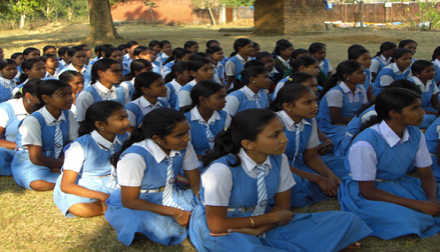
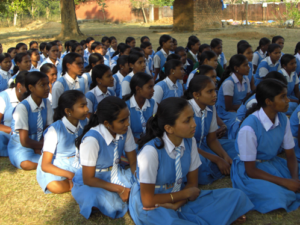 A large number of children are still outside the fold of elementary and early childhood education. There is a wide gap in children’s access to learning facilities in terms of gender, caste, class, ethnicity, and religion. Retention & drop outs, meaningful school participation, learning by children, primarily from the weaker and disadvantaged sections of society, especially the tribal, remains an issue of serious concern.
A large number of children are still outside the fold of elementary and early childhood education. There is a wide gap in children’s access to learning facilities in terms of gender, caste, class, ethnicity, and religion. Retention & drop outs, meaningful school participation, learning by children, primarily from the weaker and disadvantaged sections of society, especially the tribal, remains an issue of serious concern.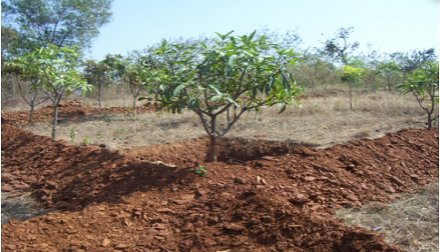
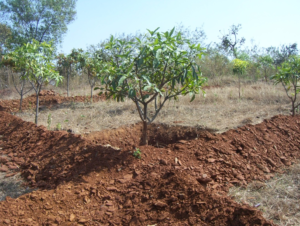 5% Corner Pit Model: This is a model of in-situ rainwater harvesting suitable for medium uplands, in which every plot has its own water body, the area of which equals 5% of the total area of the plot. The pit is able to hold rainwater that otherwise flows out of the plot as runoff. The water held in the pits irrigates the plots during water scarcity.
5% Corner Pit Model: This is a model of in-situ rainwater harvesting suitable for medium uplands, in which every plot has its own water body, the area of which equals 5% of the total area of the plot. The pit is able to hold rainwater that otherwise flows out of the plot as runoff. The water held in the pits irrigates the plots during water scarcity.